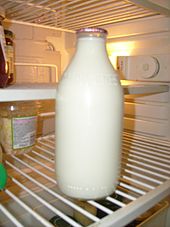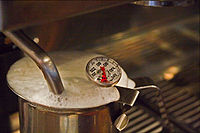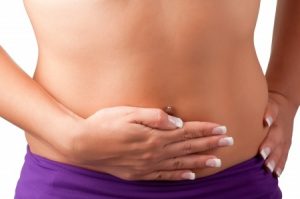
Shhhh. Never talk about dairy. Never ask why dairy didn’t cause problems decades ago, yet it’s bad for you today.
The problem with dairy for most people isn’t because it is dairy. The problem is more how dairy products are processed, pasteurized, stored, sterilized, preserved, and marketed, as well as the condition of the animal at the time of milking.
A primary source of infectious substances in milk is from infected udders, which spreads infection to the milk at milking, and many of these pathogens are able to survive in significant numbers.
The pasteurization of milk has been under increasing scrutiny due
to the discovery of pathogens remaining after pasteurization that
are both widespread and heat resistant.
In recent years, the over-pasteurization of milk has renewed our interest in raw milk products. (keep reading for more on pasteurization)
So, lets backup and focus on dairy for what it is supposed to be.
Raw Dairy

Raw dairy that has not been pasteurized contains immunoglobulins and the digestive enzymes lipase and phosphatase, which are inactivated by heat, I.E. pasteurization.
Raw milk also contains vitamin B6 of which up to 20 percent may be lost during pasteurization and heat treatments.
Raw milk also contains beneficial bacteria which aid digestion and boost immunity.
The 3 Milk Cultures
The three major milk cultures are:
- Buttermilk
- Kefir
- Yogurt
In the “olden days”, milk cultures were part of the daily diet – and well they should be. Any or all of these dairy foods (if you can find them in modern markets) can be used to make your own milk cultures.
They all have the same nutritional advantages of raw milk.

Thick Milk
THICK MILK (also known as claubber, soured, and whole milk):
- Add 1/4 cup buttermilk to 2 cups certified (organic) milk.
- Cover the container and set it aside for 24 hours to allow it to form a tangy custard with both curds and whey.
- The whey is naturally high in calcium. Keep this in mind if you drink a lot of soft drinks.
- You can use some of the “thick milk” to start a new batch, too. Mold may form, but it is harmless. Simply scrape off the mold, and use it to make cheese.
What a nutrient rush, especially if you have calcium deficiencies!
Kefir
KEFIR:
- Add 1/4 cup unflavored kefir to 2 cups certified milk.
- Cover the container and set it aside for 48 hours.
- The resulting custard is mildly sour, but what a yogurt drink!
- Put the kefir culture in the blender with fruit and fruit juices and create a tasty, nutritious, natural drink.
Yogurt
YOGURT:
- Take 1/4 cup unflavored, commercial yogurt and add 2 cups certified milk.
- Cover and set for 72 hours.
- The resulting custard is very sour, but it’s nutritionally rich primarily because pathogenic bacteria do not live in lactic acid.
- If you have a gastrointestinal problem, the more sour the yogurt, the more beneficial to you.
- Serve with fruit, honey, sorghum, or maple syrup, and make the healthiest yogurt in the world. Mix with a fruit drink and make slushy ice cream or a smoothie.
Powdered Milk
Avoid powdered milks.
Powdered milks are cooked and are high in artificial vitamin D and the heavy metal strontium.
What’s oxymoronic is excessive strontium alters proper calcium absorption. A little bit of dried milk goes a long way, but a cup or more a day can be toxic.
Highly concentrated powdered milks are found in some protein powders and pills. This means that when combined with a vigorous workout regimen, concentrated doses of powdered milk products can be toxic for many weight lifters and athletes.

Pasteurization
So, why was dairy once a good thing, but now it’s a not-so-good thing?
Why has dairy changed?
Pasteurization, for one thing.
I’ve always wanted to know why is it unlawful to sell unpasteurized milk in the United States today.
Shouldn’t it be the consumer’s choice?
Pasteurization is the process by which milk and other fluid foods are sterilized. The procedure is called “pasteurization” after Louis Pasteur, a 19th century scientist.
Pasteur was paid to investigate problems French wine growers were having with fermentation. During his research, he discovered that heating milk to a temperature slightly below boiling point would effectively stop fermentation and prevent milk from spoiling.
This heating also destroyed diseased organisms that would have been passed on to consumers. As a result of his studies on pasteurization, Pasteur in turn identified the tuberculosis bacillus known as “Tuberculosis,” the most prominent lung infection affecting mankind at that time.
Today, pasteurization has transformed dairy past the point that Louis Pasteur had intended. Pasteurization has completely annihilated all nutritive value in dairy products.
How Pasteurization Works

Pasteurization is normally achieved by heating milk for about 40 minutes at a temperature around 140-1600°F (60-700°C).
However, this heating destroys the vitamin C in milk, chemically alters milk sugar or lactose, and metabolizes the fat and carbohydrate stores within milk protein.
These components of raw unpasteurized milk are needed in their natural form to aid in chemical reactions within the body because the body requires raw energy from the milk to support bones and teeth.
As a result of heating, the vitamins and minerals in the milk begin to metabolize or break down before the body receives them. In other words, the milk has already been broken down before the body is able to use it.
We are, therefore, drinking “moot” milk. It does the body little good.
Combine “moot milk” with “cavernous sodas”, and you are drinking non-productive beverages with failing nutritional value, creating malnutrition in modern humans.
It would be worthwhile to reestablish the minimal degree to which milk is pasteurized.
Americans have taken our food technology beyond a steady state. We discovered a good thing, but took it way beyond a natural balance.
Dairy products are subjected to an overkill of pasteurization. Do you think this creates lactose intolerance and affects IBS?

Hum.
________________
If you want to learn more about healthy eating and get healthy recipes, contact me at janethull.com. Remember that you are never alone when you are looking for good health!
Gain access to all of my online programs, ongoing support, monthly Q&A, and more by joining my Private Inner Circle Membership Program. I look forward to supporting you on your journey to alternative health and wellness.
_____________
Disclaimer: This article is for informational purposes only, and is educational in nature. The FDA may not have evaluated some of the statements. This article is not intended to diagnose, treat, cure, or prevent any disease. Please discuss with your own, qualified health care provider before adding supplements or making any changes to your dietary program.
Before taking vitamins, consult your doctor; pre-existing medical conditions or medications you are taking can affect how your body responds to multivitamins.
You have our permission to reprint this article if you attribute us with a live back-link to this article and the youtube links. https://janethull.com/